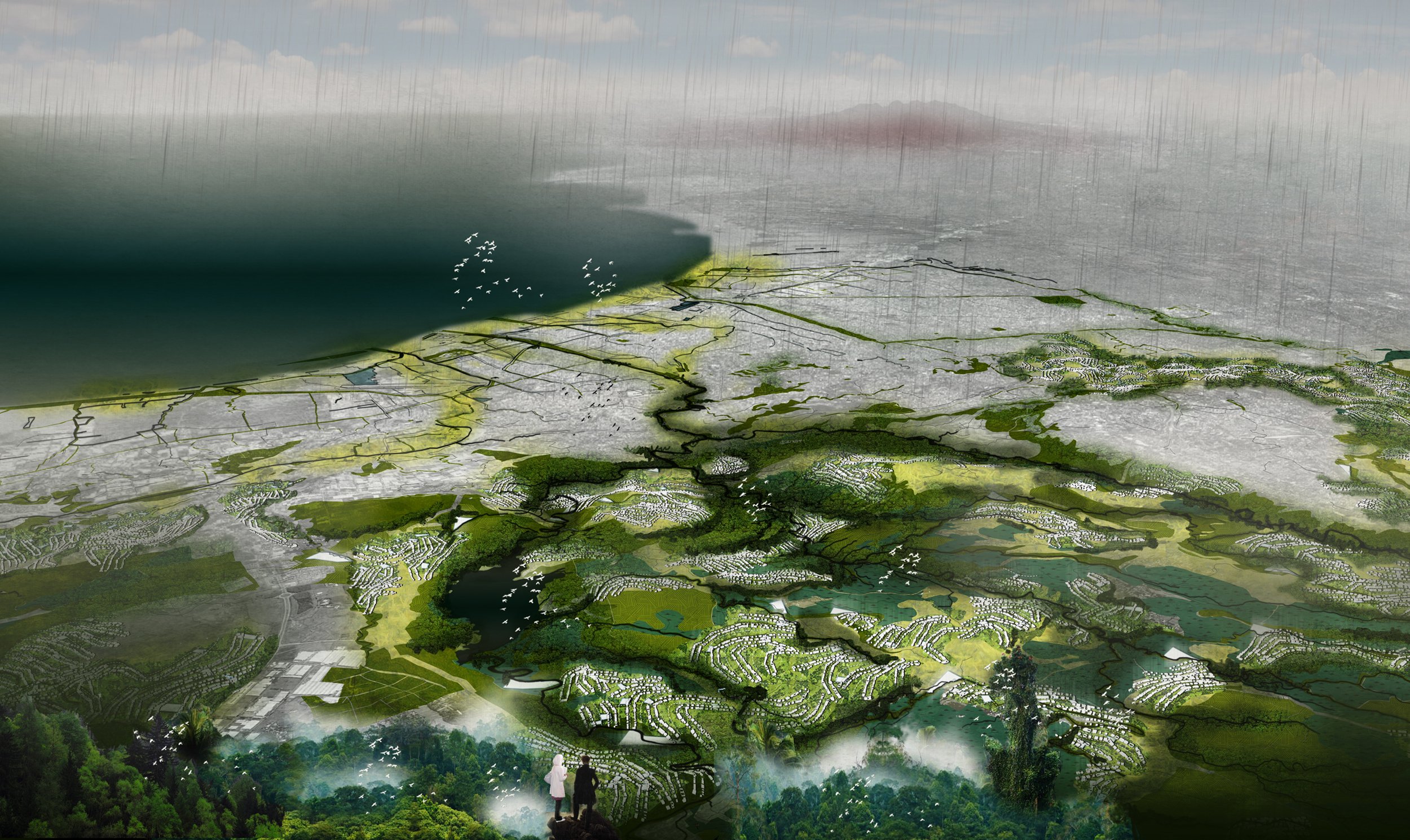
Cascading
Semarang
Within the framework of the Water as Leverage program, a large coalition of local and international experts came together to develop an explorative urban model for Semarang, capable of delaying runoff and vastly increase water retention and reuse.
-
Location
Semarang , IndonesiaYear
2019 -
MLA+
Deltares
Witteveen+Bos
UNDIP
UNISSULA
Liveable Cities platform -
Water as Leverage
RVO -
Design Directors
Eric Frijters
Olv KlijnProject Leader
Rens WijnakkerTeam members
Luca De Stefano
Isabella Suppa
Marianne Lafontaine-Chicha
Nafeesa Hamza
Reinout Haisma
Duong Bui
The city of Semarang is currently experiencing a series of water related threats, including flash floods, land subsidence and water scarcity. The issues aforementioned are interconnected, and find their roots in an urban water management strategy that generates excessive runoff and scarce retention.
The Cascading Semarang urban strategy, designed in collaboration with local authorities, builds on five concepts, which vary in scale and strategic approach according to zoning, topography and projected results. Each strategy aims to use new water infrastructure to generate sustainable development, improving not only water management, but also economy, public space, waste processing and clean energy production. The concepts are complementary, and combined they provide a comprehensive solution for the whole Semarang Metropolitan Region.
Micro-interventions: A series of small scale water strategies at a household level, generated through bottom up programs and a system of microloans.
Spongy Mountain: A new development model to transform the uphill area of Semarang into a water retaining, landslide resilient sponge. Water strategies vary according to different zoning: Extended River, Spongy Forest, Spongy Urbanization and Water efficient agriculture.
Rechanneling the city: Reactivating water system downhill through a system of enhanced canals and flexible public space.
Feeding the Industry: Catching water runoff to turn it into a steady water provision for industrial zones.
Fighting Land Subsidence: Reducing Groundwater extraction and recharging deep aquifers to counteract land subsidence.
Currently the rainfall is collected by the canals system and discharge as quickly as possible. All strategies being applied at the moment focus on getting the water out. Meanwhile they neglect the opportunities of utilizing the rainwater to solve Semarang’s lack of fresh water. Water is maximally utilized in different ways and in different parts of the city. Starting upstream, the watershed is cascaded to store, mitigate and use the water. In different part of the city, water is integrated with existing interventions of the cities to create synergy between different domains. Rather than trying to solve individual problems with individual measures, we take a systemic approach to defining answers to the different water questions arising in Semarang. Five concepts focusing on different steps of utilizing rainwater have been proposed. They each have their own focus on different areas of interventions, but they also function together as a drive for systemic change.
The overall concept of ‘Cascading Semarang’ targets shifting the view of water as a threat towards benefit. By adding the concept of ‘cascading’ to the current water management system, a series of elements of storage and utilization are created with a complementary and synergetic approach. Semarang and its water shed will be cascaded to store and utilize, and the hazards will be mitigated.
“Spongy Mountain Terraces” implies the creation of nature-based adaptive systems, which allow to catch, keep and reuse the water in the uphill area in order to minimize the negative effect on downstream areas. The uphill interventions concentrate on different conditions like ecological conservation areas, new spongy developments in landslide risk area and water retention ponds/ reservoirs.





